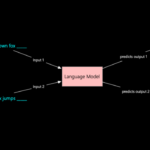What is the Difference Between Long and Wide Format Data?
In data analysis and data science, organizing your data correctly is a crucial step that can significantly impact the efficiency and accuracy of your analysis. Two common ways to organize data are long format and wide format. Understanding the difference between the two formats is essential for preparing your dataset before performing any statistical analysis, machine learning, or visualization tasks.
In this blog, we’ll explore the differences between long format and wide format data and discuss when each format is appropriate to use.
Wide Format Data
In wide format data, each subject or entity is represented by a single row, and each repeated measurement or response is spread across different columns. Each column typically represents a different variable or time point for the same subject.
Key Characteristics of Wide Format:
- One row per subject: Each row represents a unique subject (or entity, like a patient, student, etc.).
- Multiple columns for different variables: If a subject has multiple measurements or responses, each of these measurements will be placed in its own column.
- Each column represents a time point or a different variable: For example, if you’re measuring a subject’s blood pressure at three different times, the three measurements would each have their own column.
Example of Wide Format:
| Subject ID | Blood Pressure (Time 1) | Blood Pressure (Time 2) | Blood Pressure (Time 3) |
|---|---|---|---|
| 1 | 120 | 118 | 115 |
| 2 | 130 | 128 | 127 |
| 3 | 110 | 112 | 108 |
In this example, each subject’s blood pressure readings at different time points are stored in separate columns, making it easy to compare each time point within a subject’s row.
Advantages of Wide Format:
- Easier to understand when variables are independent of each other.
- Convenient for summarizing or displaying data in a readable table when there are only a few variables or time points.
Disadvantages of Wide Format:
- Not ideal for statistical analysis, especially if the number of variables or repeated measurements is large.
- Can make data analysis and visualization more difficult when the data needs to be reshaped.
Long Format Data
In long format data, each row corresponds to a single observation or measurement for a subject at a specific time point. Rather than spreading a subject’s multiple measurements across several columns, each time point or measurement is placed in a separate row.
Key Characteristics of Long Format:
- One row per observation: Each row represents one measurement or time point for a subject.
- Repeated measurements are stacked in rows: The same subject will have multiple rows, each representing a different time point or measurement.
- A variable column typically represents the time or condition: Instead of having separate columns for each time point, the time or condition will often be a separate column.
Example of Long Format:
| Subject ID | Time | Blood Pressure |
|---|---|---|
| 1 | Time 1 | 120 |
| 1 | Time 2 | 118 |
| 1 | Time 3 | 115 |
| 2 | Time 1 | 130 |
| 2 | Time 2 | 128 |
| 2 | Time 3 | 127 |
| 3 | Time 1 | 110 |
| 3 | Time 2 | 112 |
| 3 | Time 3 | 108 |
In the long format, each subject has three rows (one for each time point), and the time point is stored as a separate column. This format makes it easy to analyze repeated measurements and perform statistical analysis.
Advantages of Long Format:
- Better suited for statistical analysis and modeling, particularly when using time-series data or performing regression analyses.
- Easier to handle when there are many repeated measures or when a subject has multiple observations over time.
- More flexible for data visualization, especially for generating line plots, box plots, and other types of graphs where individual observations need to be shown over time.
Disadvantages of Long Format:
- May be more difficult to read and interpret directly, especially for smaller datasets.
- When there are few variables or measurements, it may feel like there is unnecessary repetition of subjects.
When to Use Long Format vs. Wide Format
- Use Wide Format:
- When your data contains only a few variables or repeated measurements.
- When the focus is on summarizing or presenting data rather than performing complex statistical analysis.
- When you need to easily compare different variables or time points within each subject.
- Use Long Format:
- When your analysis involves repeated measures or time-series data.
- When you need to perform statistical analysis such as regression modeling or mixed-effects modeling.
- When working with machine learning algorithms or visualization tools that require the data in a tidy, long format.
Converting Between Long and Wide Format
One of the key skills in data manipulation is being able to transform data between long and wide formats, depending on the task at hand. In Python, you can use the pandas library to easily reshape your data:
- Wide to Long: You can use the
melt()function in pandas to transform your data from wide to long format. - Long to Wide: You can use the
pivot()function to convert your data from long to wide format.
Here’s an example of how to convert between formats using pandas:
|
1 2 3 4 5 6 7 8 9 10 11 12 13 14 15 |
import pandas as pd # Example wide format data df_wide = pd.DataFrame({ 'Subject ID': [1, 2, 3], 'Blood Pressure (Time 1)': [120, 130, 110], 'Blood Pressure (Time 2)': [118, 128, 112], 'Blood Pressure (Time 3)': [115, 127, 108] }) # Convert wide to long df_long = pd.melt(df_wide, id_vars=['Subject ID'], var_name='Time', value_name='Blood Pressure') print(df_long) |
Conclusion
In summary, understanding the difference between long format and wide format data is essential for data manipulation and analysis. The wide format is more readable for datasets with fewer measurements or variables, while the long format is more suitable for statistical analysis and machine learning tasks. Knowing when to use each format and how to reshape your data can make your data science projects much more efficient and effective.



















